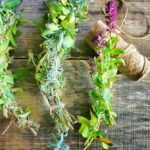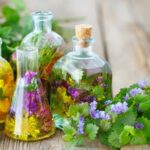If you’re interested in the origins of medicine, you’ve probably heard of Bald’s Leechbook. But for those who haven’t heard of this text, it’s one of the oldest writings on medicine and medical practices.
Although these remedies and approaches might sound strange and even ridiculous from a modern perspective, it’s fascinating how many have at least some relevance even today. Researchers from the University of Nottingham discovered that one of the recipes from the book might even offer resistance to the superbug, MRSA!
Sound fascinating? It really is. Here’s what ancient medicine can still teach us today.
Natural Remedies Have Potential
Almost all medicines have origins that link back to the natural world. Look at how many natural treatments we still use today that are proven effective.
For example, honey, which we still enjoy as a sweet treat, has many medicinal properties. It’s a proven antiseptic and antimicrobial. It doesn’t spoil and can soothe skin ailments, sore throats, stomach discomfort, and more.
Herbal remedies and essential oils are other areas where we constantly discover scientific proof of effectiveness. Take, for example, tea tree oil or Melaleuca oil. It is a powerful antifungal and antibacterial that can effectively treat many issues, including acne. In addition, it’s useful in cleaning products and helps prevent the spread of germs.
Lavender has calming and relaxing properties. Turmeric acts as an anti-inflammatory along with ginger. There are many plants that form the base of medicinal teas, poultices, and salves that can address many different issues, from headaches to constipation to menstrual cramps.
Even pharmaceutical treatments for pain, like opioids, are derived from the poppy plant. In addition, tobacco, coca, cannabis, and many other plants have powerful effects that can alter our physical state (for better or worse).
Many people might view these natural remedies as “snake oil” treatments, assuming their power is psychosomatic. People imagine they’re feeling better, so they shift their mindset and start believing their positive thoughts. But there’s no denying that there is more to some of these natural remedies than meets the eye.
Naturopathic practices like acupuncture, yoga, meditation, massage, and even some parts of Ayurvedic medicine have become much more widely accepted in the last several years. These Eastern medical practices were once considered strange and exotic but have gained traction in the western world.
In many cultures where ancient medicine and rituals are still respected and practiced, these natural remedies are passed down through generations. People understand that they are effective, whether medically or because it speaks to tradition, community, and the culture’s spirituality. Holistic medicine—wellness that addresses the body, mind, and spirit as a whole—is powerful.
Medical researchers have discovered ancient movement practices like yoga, lower stress, improve sleep, and increase circulation. Yoga improves flexibility, reduces joint and muscle pain, and offers many other mental and physical benefits. Even 40 years ago, most people regarded yoga as outside-the-mainstream at best. Now there are yoga studios in almost every town.
Similarly, links to nutrition and health have been firmly established and accepted. As a result, medical professionals now recognize that diet plays a vital role in our wellness. Changes in diet can improve many conditions, including diabetes, digestive issues, heart disease, high blood pressure, and even some types of cancer.
We’ve explored many natural remedies, including diet, herbal, and alternative medicines. People have realized that something as seemingly simple as Hibiscus Fire Cider or Elderberry Syrup can be a recipe for better health and wellness. Certain plants, herbs, and spices become more effective and increasingly potent when combined.
So it seems logical that even a 1000-year-old medical text like Bald’s Leechbook would have some ideas that would still prove valuable today. But researchers were shocked to find that one of the recipes would offer relief where modern pharmaceuticals have failed.
Bald’s Leechbook: An Old English Medical Text
Bald’s Leechbook is an Old English medical text. The manuscript is from the Anglo-Saxtons of the 9th Century. The only copy is in London, British Library Royal MS 12 D XVII. It contains a collection of various remedies taken from Roman and Greek practitioners, including Alexander of Tralles, a well-known Byzantine physician.
The name “Leechbook” comes from lǣċe, an Old English word for doctor (who often used leeches in early bloodletting treatments, which is where the Annelids got their name). Bald was the book’s owner, per an inscription on the text that reads, “Bald owns this book, which he ordered Cild to compile. Nothing is as dear to me as this treasure.” Historians believe that the book was compiled under the influence of Alfred the Great, a huge supporter of education and study.
As for the recipes in Bald’s Leechbook, they run the gamut from treatments for injuries, illness, and infections, to spiritual and supernatural remedies. The book contains recipes for salves to protect against elf mischief, demonic possession (likely mental health issues), night goblins (likely nightmares), and the devil.
The book is also the first to mention cosmetic surgery, offering treatment for cleft lip. There are guidelines for wound treatment, minor surgical procedures, and even limb amputation.
Some of the recipes may sound extremely strange to modern readers. For example, a remedy for neck pain involves a poultice made from white dog feces and honey smeared on the patient while the dog chews a bone in the spot where he eliminated.
There are precise instructions like treating a headache by binding crosswort to the forehead with a red kerchief. The agrimony herb is used for impotence treatment (boiled in milk). Treatment for swollen eyes involved cutting off the eyes of a crab, returning the crab to the sea, and placing the eyes on the neck of the patient.
Other cures were ritualistic in nature, instructing readers to give offerings or blessings. Certain rituals were used, like inscribing words on tools or taking medicine in a certain way, such as drinking it from a church bell or under a specific moon phase. Patients were often instructed to wait a specific period of time, recite prayers, or do physical actions to increase the remedy’s effectiveness.
While some of these recipes and instructions seem silly today, it’s important to recognize that many are rooted in truths. Plants and natural remedies are potent, and many are effective and even accepted in modern medical practice. Researchers continue to study Bald’s Leechbook to see what they might learn from many of these ancient cures.
Bald’s Leechbook Offers a Potential Treatment for MRSA
One of the recipes in Bald’s Leechbook made headlines recently. An eye salve meant to treat styes (caused by S. aureus bacteria) and ingrown eyelashes contained ingredients that were proven to have strong antibiotic properties.
The recipe called for:
- Wine
- Garlic
- Leeks
- Bile (from a cow stomach)
After the bile was cured for nine days in a brass bowl, patients combined the ingredients and applied the treatment to their eyes.
Now we may balk at applying cow’s stomach bile to our eyes, but many different pharmaceuticals originate from animals and plants. For example, Premarin, a medication used to ease the symptoms of menopause, gets its name from “pregnant mare’s urine.” Before 1982, when synthetic insulin was created, people with diabetes relied on insulin from cows and pigs.
Many ingredients in medicine, cosmetics, and food are derived from animals and plants. We commonly use gelatin in pill capsules, which comes from animal collagen derived from bones and skin. Naturally animal-derived ingredients are quite common—so much so that we probably don’t even think about it.
Scientists at the University of Nottingham discovered that the naturally derived eye salve from Bald’s Leechbook could potentially treat MRSA. For those unfamiliar with MRSA, it is one of the most resistant superbugs in the world. Methicillin-resistant Staphylococcus aureus, or MRSA, is deadly, killing between 20-50% of infected hospital patients.
What’s worse, MRSA often spreads rapidly amongst critically ill patients who have less resistance to infection. As a result, it’s become a common hazard of hospital stays and is one of the reasons physicians have made an effort to shorten the length of time patients must stay overnight.
We’re experiencing greater antibiotic resistance to many infections, including MRSA. Public health researchers and proponents have expressed that antibiotic resistance will continue to be a concern in the future, and we must look for alternative treatments.
To test the effectiveness of the natural antibacterial remedy, researchers applied the mixture to MRSA-infected mice. Individually, the ingredients didn’t prevent the growth of S. aureus, but when combined, they showed strong antibiotic activity, in some cases killing up to 90% of the bacteria. The preliminary results have yet to undergo a peer review, but the results were encouraging, opening the path to future explorations.
With the success of this recipe from Bald’s Leechbook, researchers recognized the potential of many of the natural remedies and hope to use them in future studies. They will continue to explore and review the results to see the implications for human patients.
It’s encouraging and exciting to realize that some of the answers to today’s modern medical questions may reside in these natural remedies and ancient practices. Once again, the earth offers powerful medicine if we’re willing to explore the potential.
For more natural medicine, don’t miss:
The Pineal Gland – Circadian Rhythm and the Third Eye
How to Find Relief from Seasonal Allergies
How to Improve Gut Health Naturally for Better Health Overall









Leave A Reply!